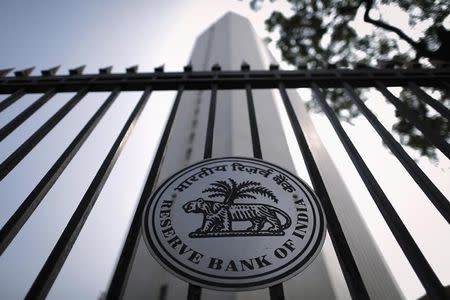India expected to keep interest rates steady until after budget

MUMBAI (Reuters) - Having cut its policy interest rate just three weeks ago, the Reserve Bank of India (RBI) is expected to hold rates steady at a policy review on Tuesday, leaving its next move until after the government presents its annual budget at the end of this month. The timing of the 0.25 percentage point cut in the repo rate on Jan. 15 caught markets off-guard, even though investors were expecting the RBI to embark on a easing cycle at some point during the early months of the year. Comforted by falling world oil prices and inflation slowing, the RBI, however, saw little point in waiting any longer to reduce borrowing costs in an economy that was struggling to gather momentum. But RBI Governor Raghuram Rajan said at the time that the central bank's ability to cut further would partly depend on the government efforts to reduce India's fiscal deficit. With that in mind, most economists polled by Reuters expect the RBI to keep its repo lending rate steady at 7.75 percent at Tuesday's monetary policy review, but reduce rates quickly later so long as the budget, due to be unveiled by Finance Minister Arun Jaitley on Feb. 28, does not disappoint. "While we anticipate a front-loading of rate cuts, these would be put into effect after the budget, after the RBI looks at the government's fiscal roadmap and the quality of its fiscal consolidation plan," said Shubhada Rao, chief economist of Yes Bank in Mumbai. Not everyone thought the RBI would wait until then. A quarter of the analysts surveyed held out expectations for another 25 basis points reduction. Whether the RBI cuts on Tuesday or not, markets are pricing in more interest rate cuts over the rest of the year. The plunge in global crude prices and bigger-than-expected falls in domestic vegetable and fruit prices have led to sharply easing inflation. Consumer prices rose 5 percent in December, well within the RBI target of 6 percent by January 2016. Until a massive revision in India economic growth figures for the fiscal year that ended last March, India had seemed to have been struggling to recover from its slowest phase of growth since the 1980s. But last Friday, the government revised its data, changing the formula to show the economy grew 50 percent faster than earlier estimated in 2013/14. Growth for the previous fiscal year is now put at 6.9 percent, instead of 4.7 percent. That is below the 8 percent rate needed to create enough jobs for the millions of young Indians joining the workforce each year, and analysts doubted whether the revision would be used by the RBI as a reason to delay future rate cuts. (Reporting by Neha Dasgupta and Rafael Nam; Editing by Simon Cameron-Moore)

